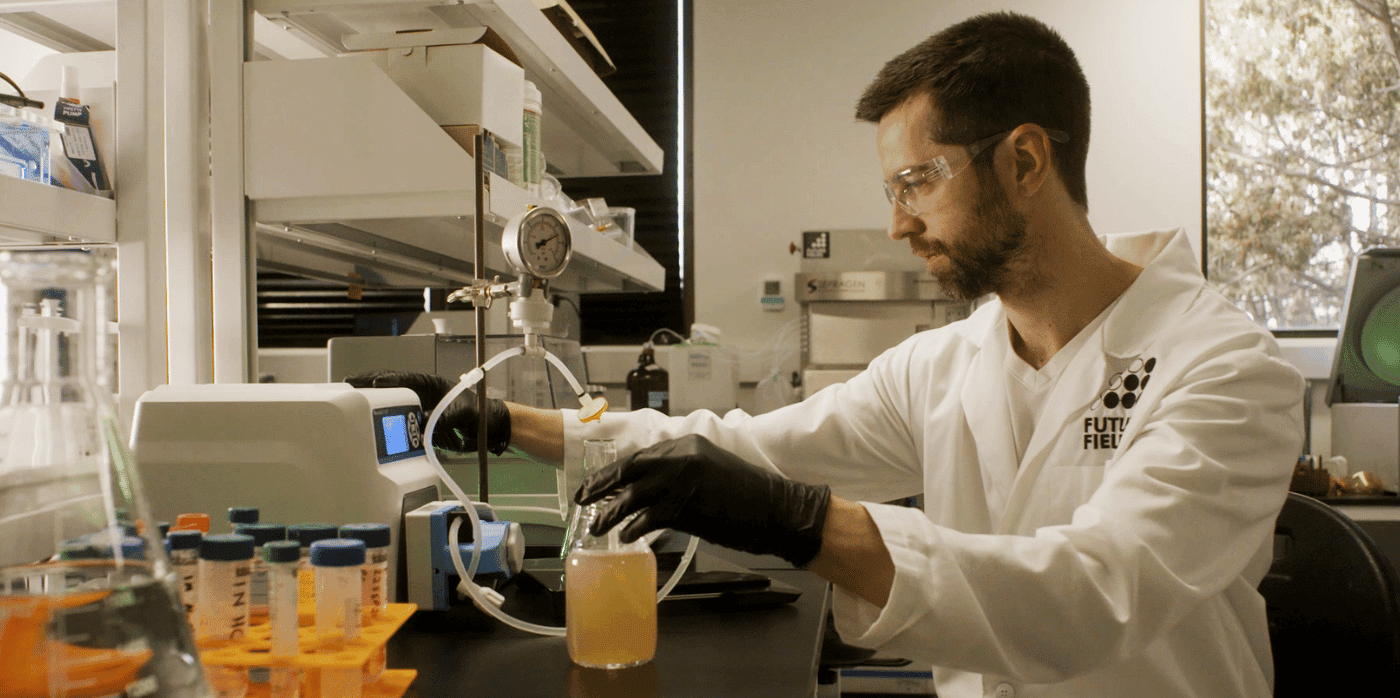
Spotted: One day in 2018, Matt and Jalene Anderson-Baron were standing in line at the University of Alberta Tim Hortons discussing how to grow a cell-based chicken nugget without using foetal bovine serum (which is harvested from bovine foetuses during slaughter). The two wondered if they could use fruit flies, Drosophila melanogaster, to act as a substitute for bioreactors. The result of this conversation was Future Fields and its fruit-fly-based EntoEngine.
Bioreactors (which look like giant steel tanks) are used to generate the biomolecules needed for things like medicine, vaccines, and cultivated meat. However, bioreactors have a large carbon footprint. To reduce this, Future Fields uses fruit flies as a replacement. The process begins by identifying the protein that they want to produce and cloning the necessary DNA sequence.
Future Fields inserts the DNA into the fruit fly genome and breeds the flies. It then extracts and purifies the protein, and tests for quality. Compared to traditional recombinant protein production methods, Future Fields’ insect-based EntoEngine uses less water and energy, emits fewer greenhouse gases, and has a smaller land footprint. It also produces waste products that have other uses, contributing to a circular economy.
Co-founder Matt Anderson-Baron explains: “We’ve passed a tipping point where it’s scaling, not creating, biotech-based products that is the fundamental hurdle for founders, companies, and entire industries. Our approach is 30 times faster than tanks and more or less infinitely scalable with minimal investment.”
Future Fields recently $11.2 million (around €10.5 million), which will be used to scale the team and construct a “world first” production facility.
Researchers are increasingly turning to insects to improve sustainability. Some of the innovations Springwise has also spotted include a project that uses flies to convert food waste into animal feed and fertiliser, and salmon feed made from plastic-fed waxworms.
Written By: Lisa Magloff

